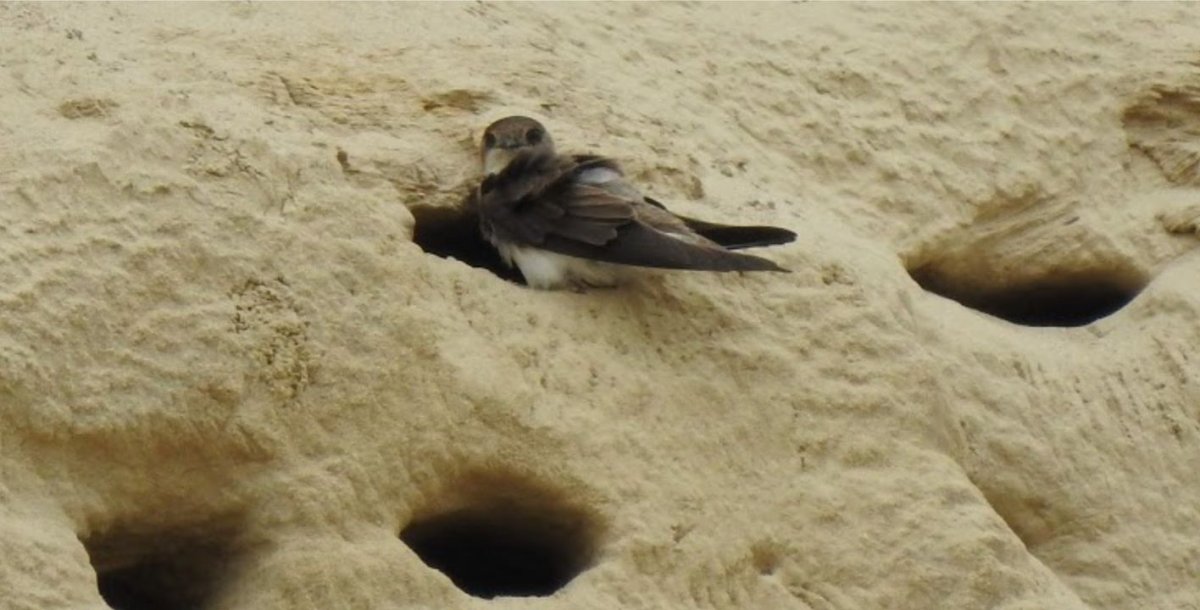A London, Ont., bird researcher is voicing his concerns in an effort to protect a major colony of an endangered species that nests in the city.

Brendon Samuels, a PhD student at Western University, is one of the creators of a petition called ‘Save London, Ontario’s bank swallows,’ which is aimed at protecting bank swallows, a type of bird, that nest in a gravel pit in the Byron area.
Samuels told 980 CFPL Sunday his main concern involves the potential development of the gravel pit. He says there has been talk in recent decades about turning the area into housing complexes or an outdoor recreation area.
“I received a tip from someone who lives in the area who said, ‘there’s quite a lot of these birds here, and I notice there’s construction happening; we got bulldozers and dump trucks that are bringing in fill,'” Samuels said.
“I was concerned these trucks could be operating within close distance of these nests and could be disturbing them.”
The PhD student decided to visit the site, and was “very surprised” once he discovered “almost 2,000 birds nesting there, (all) in the gravel pits.”
“Bank swallows will nest in colonies that range in size from a dozen to up to 2,000, and so that would make this one of the largest in the region.”
The birds are a protected species under the Endangered Species Act as well as the Migratory Birds Convention Act.
Samuels says they provide many benefits to wildlife and humans.
“They’re part of our indigenous wildlife, so they comprise an important layer of our ecosystems,” Samuels explained.
He says each bank swallow also eats hundreds of insects every day.
“If you take hundreds of mosquitoes, for example, and you take hundreds of insects per bird, scale that up to 2,000 birds in the area — that has implications for pest control.”
Due to human activity, Ontario has lost 93 per cent of its bank swallows population in the last 50 years, according to Samuels.
“This is one of the last remaining sites in the area that’s able to accommodate nests for 2,000 of these birds.”
In terms of his next steps, Samuels says the best-case scenario is to preserve the colony by setting up buffers around it to ensure pedestrians don’t walk up the slopes.
“We can also turn it into a feature of the site, so people in London and the surrounding area can come and view this amazing colony of a threatened species at risk,” said Samuels.
“Another possibility is if we can’t save that slope, we’re going to have to look seriously at compensation, such as ‘can we create an alternate site for habitat for these birds?'”
In 2018, the City of London initiated the Byron Gravel Pit Secondary Plan to review the pits and the surrounding area to determine future land uses for the site once land rehabilitation is complete.
In a statement, the City explained development cannot occur until the site rehabilitation work has been completed and approved by the Ministry of Natural Resources and Forestry and the secondary plan is approved by council.
“As part of the secondary plan review, the City is looking at opportunities to recreate the natural habitat in future open space and recreational lands,” the statement read.
“It is anticipated that the longer term land use within this area will include a mix of residential development and recreational uses.”
A draft Secondary Plan is in the works, and it is set to be presented to council later this year for approval.
The petition has reached more than 4,800 signatures as of Monday afternoon, and can be found online.










Comments